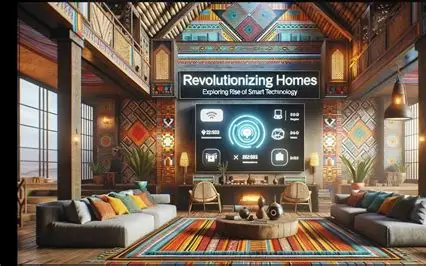
Not long ago, I walked a client through the final stages of purchasing a home in one of Nairobi’s upmarket estates. They were excited by the property’s location, design and finish but their primary concern was not about square footage or granite countertops. They wanted to know how quickly the house could be upgraded into a smart home.
Could the door locks be digitally controlled through a mobile phone? Could cameras be linked to a secure cloud network? Could lighting and water heating be automated to save on energy bills?
We worked with contractors to retrofit the house with smart access controls, energy saving sensors, and security integrations. Yet as the process unfolded, I could not help but think that many of these features should have been included at the construction stage. The new Kenyan homebuyer is not just looking for a house; they are looking for a smart house.
This shift in expectations is not a passing trend. Across Nairobi, Mombasa, Kisumu and Nakuru, the conversation among buyers is increasingly about digital readiness. A house may have a beautiful façade and expansive lawns but if it lacks provisions for integrated security, smart lighting or efficient energy management, many high end buyers will walk away or budget for expensive modifications.
Developers who ignore this evolution risk building houses for yesterday while the market is firmly rooted in today.
When we talk of smart homes, what do we really mean? At the most basic level, it is the integration of Internet of Things technology into residential spaces. This means connected devices that can be managed remotely and that communicate with one another to improve efficiency. Access control systems replace traditional locks; sensors regulate electricity and water use; surveillance cameras offer security that can be monitored from anywhere in the world.
A collection of such houses within a gated community creates an intelligent grid of real estate. Extend that across multiple estates and we begin to see the foundations of a truly smart city.
The benefits are significant. Take energy, for example. The average Kenyan household spends a significant amount of its income on electricity. With smart lighting, thermostats and solar integrations, families can save up to a third of these costs. Water management is another frontier. Smart metres can help households monitor consumption in real time and detect leakages, saving resources while lowering bills. Security too is revolutionised; an estate with networked cameras and smart gates not only reduces crime but also builds community trust.
Developers have a crucial role to play here. When planning new projects, it is far cheaper to design with smart provisions in mind than to retrofit later. Cabling for internet backbones, slots for solar integration and spaces for control panels should be part of the architectural design. We are already advising developers on these aspects and applying the same principles in our own projects. It is what we like to call taking our own medicine. By doing so, we are ensuring that the houses we deliver are aligned with the demands of a new generation of buyers.
The economic opportunity is immense. A World Bank report has noted that Africa’s housing shortage is more than 50 million units. In Kenya alone, the deficit stands at around two million homes, growing by 200,000 annually. If developers respond with traditional models, we will lock ourselves into inefficient housing stock for decades. If we embrace smart solutions, however, we can leapfrog into an era where estates become hubs of digital living, and our cities evolve with them.
The future of housing is not about luxury alone. Even affordable housing can incorporate basic smart elements. Imagine government projects where every unit is equipped with prepaid smart meters for electricity and water, community Wi-Fi access points, and solar-ready roofing. These features may add slightly to the upfront cost but they save families money over time, reduce strain on public utilities, and create neighbourhoods that are digitally connected.
Back to my client, they are now enjoying their upgraded home. They can check who is at the gate from their phone, ensure the lights are off when away, and manage their energy bills with confidence. For them, this is not a luxury; it is an expectation of modern living. That is the lesson for all of us. Smart housing is not the future. It is here, today.
– A Tell Media report / By Mwenda Thuranira – CEO of Myspace Properties








